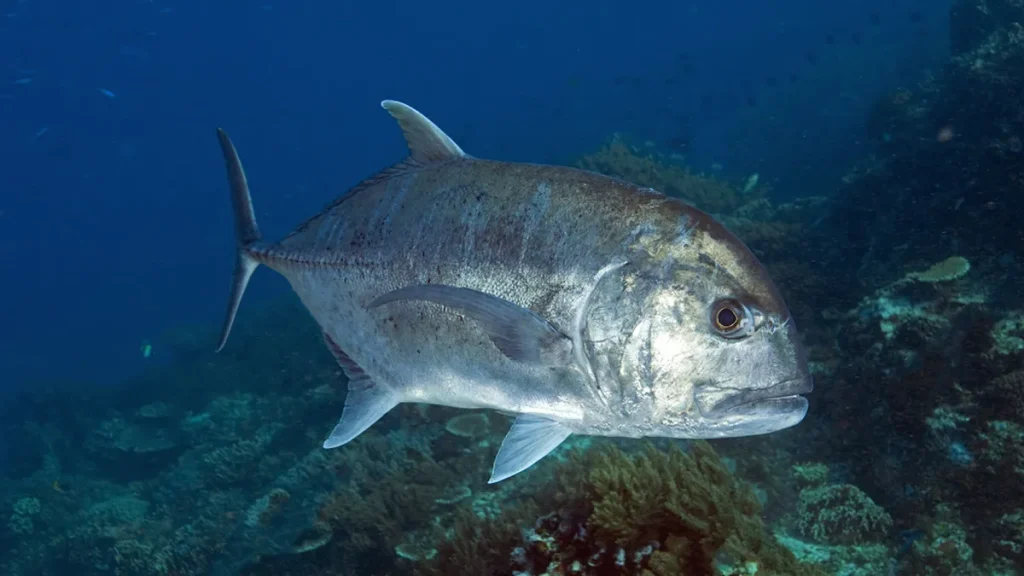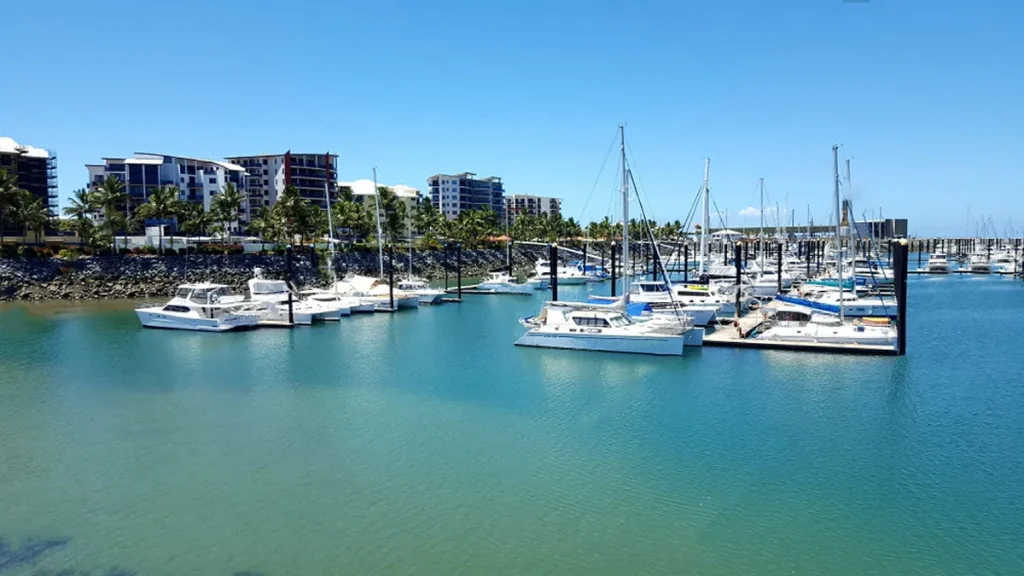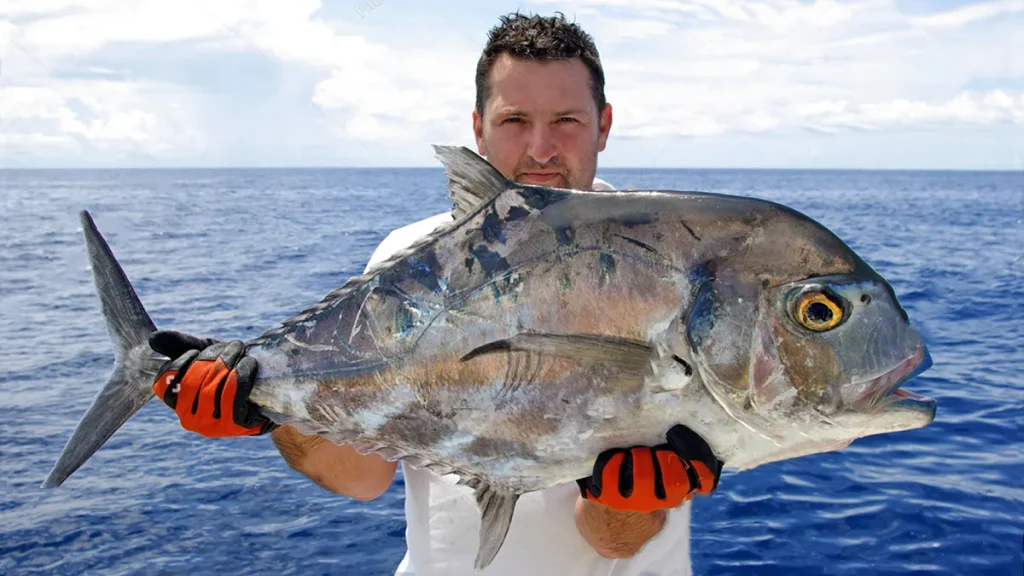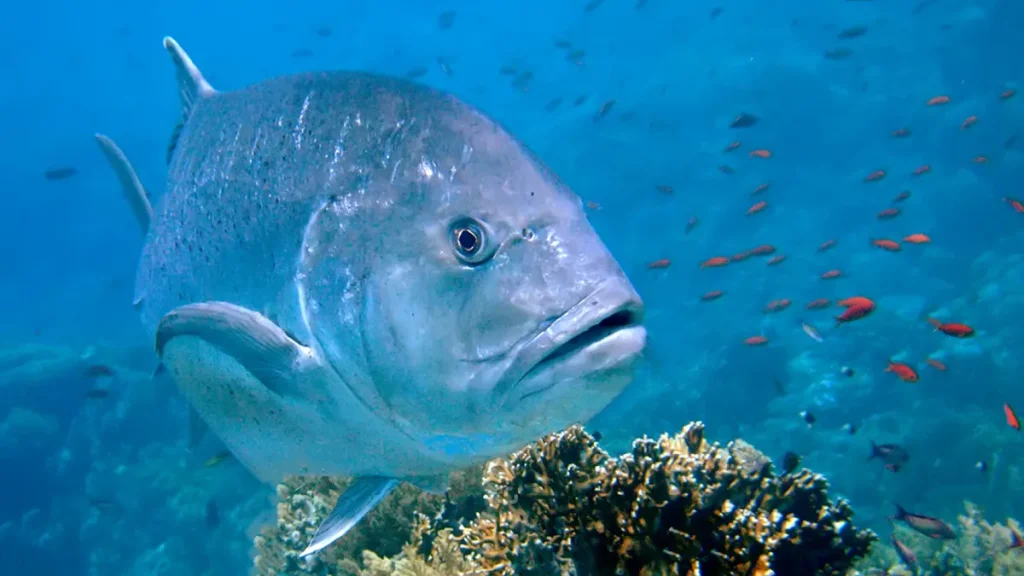G’day fellow anglers! If you’re as passionate about recreational fishing as we are, you’re in for a real treat. Today, we’re diving into the thrilling world of catching giant trevally in Australia. These magnificent fish, known for their brute strength and stunning silvery grey appearance, are the ultimate prize for any angler.
We’ve spent countless hours fishing in our beautiful coastal waters, and let us tell you, there’s nothing quite like the adrenaline rush of hooking a giant trevally. They’re not just any fish; they’re a test of your skills, gear, and patience. Whether you’re a seasoned pro or just getting started, this guide is packed with tips and tricks to help you catch these incredible creatures.
Now, when it comes to gear, having the right line can make all the difference. We’ve had the best results with our lines. Trust us, their durability and strength are unmatched, perfect for battling those hefty trevallies. If you’re serious about giant trevally fishing, check out our selection at ReelBoss.
So grab your rods, and let’s get ready to explore everything you need to know about catching giant trevally in our Aussie waters. Let’s make your next fishing trip one to remember!
Understanding Giant Trevally

Alright, mates, let’s dive into understanding the giant trevally a bit better. These fish are true marvels of the sea, known for their powerful builds and striking silvery grey bodies. One of the distinctive features of a giant trevally is its strong pectoral fins, which give it incredible speed and agility in the water.
Now, when it comes to their habitat, giant trevally are quite versatile. You can find them cruising through coastal waters, patrolling seaward reefs, and even lurking around offshore banks. These locations offer the perfect environment for them to hunt and thrive.
Speaking of hunting, their behavior is nothing short of fascinating. Giant trevally are known for their aggressive feeding patterns. They often hunt in packs, using their powerful bodies and swift movements to ambush prey. You’ll typically see them targeting smaller fish, crustaceans, and even squid.
Understanding these characteristics and behaviors is key to successful giant trevally fishing. Knowing where they hang out and how they hunt can give you the upper hand when you’re out there trying to hook one of these magnificent fish. So next time you’re on the water, keep an eye out for those silvery grey flashes and be ready for an exhilarating fight!
Best Locations for Fishing Giant Trevally in Australia

Alright, anglers, now that we’ve got a good grasp on the giant trevally, let’s talk about the best spots in Australia to catch these beauties. Our country is blessed with some of the finest coastal waters, offshore banks, and seaward reefs where these fish thrive.
When we’re fishing the coastal waters of the Great Barrier Reef, we find it legendary for giant trevally fishing. The reef’s extensive network of channels and shallows make it a prime hunting ground for these predators. Heading south, we love the coastal waters off Queensland, especially around Fraser Island. It’s always buzzing with activity.
For offshore banks, our favorite spots are off Western Australia. We often hit places like the Rowley Shoals and the Ningaloo Reef. These offshore banks are teeming with marine life, providing an abundant food source for giant trevally.
When we’re out on the seaward reefs around the Coral Sea, we’re always thrilled by the deep drop-offs and strong currents. These spots are famous for attracting large schools of giant trevally.
Essential Gear for Catching Giant Trevally
When we’re out chasing giant trevally, having the right gear is absolutely crucial. One of the most important decisions we make is choosing the perfect rod reel combo. For these powerful fish, we prefer a sturdy spinning reel paired with a heavy-duty rod. This setup gives us the strength and control needed to handle those intense battles.
The rod tip is another key factor. We always look for a sensitive rod tip that can detect even the slightest nibble. This sensitivity helps us respond quickly and effectively, increasing our chances of a successful hookup. A rod with a flexible tip but a strong backbone is ideal, providing the perfect balance between sensitivity and strength.
As for tackle, we recommend using heavy-duty lines with a high breaking strength. When targeting giant trevally, we typically use braided lines in the 50-80 lb range. These lines offer the durability and toughness needed to withstand the trevally’s powerful runs and sharp teeth.
Don’t forget the right lures, too! We’ve had great success with surface poppers and stick baits that mimic the prey giant trevally loves to hunt. With the right gear, we’re always ready for the exhilarating challenge of giant trevally fishing.
Techniques for Giant Trevally Fishing

When we’re out on the water, there are several techniques we rely on for giant trevally fishing. One of our favorites is using a surface lure. Watching a trevally explode on a lure is nothing short of exhilarating. To get the best results, we like to use poppers and stick baits. The key is to make the lure move erratically, mimicking a wounded baitfish. We often cast near structures or reefs and work the lure back with a mix of fast and slow retrieves.
Another exciting method we enjoy is fly fishing. There’s something truly special about the challenge and skill involved in catching a giant trevally on the fly. Using large, flashy flies that imitate baitfish, we target these beasts in shallow waters or along reef edges. The precision required in fly casting adds an extra layer of thrill to the experience.
We also explore other styles of fishing, such as jigging and live bait fishing. Jigging involves dropping a weighted lure and quickly retrieving it in a jerky motion, which can entice a strike from aggressive trevally. Live bait fishing, using fish like mullet or pilchards, is another effective method, especially when targeting larger giants.
Best Time and Conditions for Fishing Giant Trevally
Timing can make all the difference when it comes to giant trevally fishing. We’ve found that understanding seasonal patterns and peak times is key to success. In Australia, the best time for catching giant trevally is during the warmer months, typically from October to April. During this period, the water temperature is ideal, and trevallies are more active and aggressive.
Early mornings and late afternoons are prime times for giant trevally fishing. The low light conditions make these fish more confident and willing to strike. We’ve had the most success during these hours, especially around dawn and dusk.
As for weather, we look for stable conditions with moderate temperatures. Slightly overcast skies can be beneficial as they reduce the fish’s visibility of us, making them less cautious. Calm seas and gentle winds are also ideal as they make it easier to spot surface activity and cast accurately.
Water conditions matter too. Clear, clean water with good visibility is perfect for catching giant trevally. They often patrol around reefs and drop-offs where currents bring in baitfish. By timing our trips with the tides, especially the incoming tide, we increase our chances of hooking a trophy trevally. So, keep an eye on the conditions and get ready for some thrilling fishing adventures!

Tips for a Successful Giant Trevally Fishing Trip
To make the most of your giant trevally fishing trip, we’ve gathered some essential tips from our many adventures. First and foremost, preparation is key. Before heading out, we always double-check our gear. Make sure your rods, reels, and lines are in top condition because giant trevally are known for their brute strength and can easily snap weak tackle.
Next, location is everything. As we mentioned earlier, giant trevally are often found around coastal waters, seaward reefs, and offshore banks. Researching and scouting these spots can significantly improve your chances of success. If you’re new to an area, consider hiring a local guide who knows the best fishing grounds.
Timing your trip to coincide with the right conditions is crucial. We aim for early mornings or late afternoons and prefer stable weather with calm seas. Keeping an eye on the tides and water conditions can also make a big difference.
When you’re out on the water, be patient and stay alert. Giant trevally can be elusive, so persistence is vital. Experiment with different lures and techniques, and don’t be afraid to change things up if you’re not getting bites.
Finally, remember that recreational fishing is about enjoying the experience. Respect the environment, practice catch and release when appropriate, and savor the thrill of the hunt.
Conclusion
As we wrap up our ultimate guide to giant trevally fishing in Australia, let’s recap some key points. We’ve covered everything from understanding the physical characteristics and behaviors of these magnificent fish to the best locations and techniques for catching giant trevally. Remember, the right gear, timing, and preparation are crucial for a successful trip. Whether you prefer using a surface lure, trying your hand at fly fishing, or exploring different styles of fishing, there’s always an adventure waiting in our beautiful coastal waters and beyond.
We hope these tips inspire you to get out there and experience the thrill of giant trevally fishing for yourself. There’s nothing quite like the rush of reeling in one of these powerful fish. We’d love to hear your stories and see your catches, so feel free to share your experiences with us.
Lastly, don’t forget to check out our e-commerce store for all your fishing needs. At ReelBoss, we offer a range of top-quality gear that can help you land that trophy giant trevally. Visit ReelBoss and gear up for your next fishing adventure. Happy fishing, mates!
